Brandon Helfield
Evaluating Detection Thresholds: The Impact of False Positives and Negatives on Super-Resolution Ultrasound Localization Microscopy
Nov 11, 2024


Abstract:Super-resolution ultrasound imaging with ultrasound localization microscopy (ULM) offers a high-resolution view of microvascular structures. Yet, ULM image quality heavily relies on precise microbubble (MB) detection. Despite the crucial role of localization algorithms, there has been limited focus on the practical pitfalls in MB detection tasks such as setting the detection threshold. This study examines how False Positives (FPs) and False Negatives (FNs) affect ULM image quality by systematically adding controlled detection errors to simulated data. Results indicate that while both FP and FN rates impact Peak Signal-to-Noise Ratio (PSNR) similarly, increasing FP rates from 0\% to 20\% decreases Structural Similarity Index (SSIM) by 7\%, whereas same FN rates cause a greater drop of around 45\%. Moreover, dense MB regions are more resilient to detection errors, while sparse regions show high sensitivity, showcasing the need for robust MB detection frameworks to enhance super-resolution imaging.
Ensemble Learning for Microbubble Localization in Super-Resolution Ultrasound
Nov 11, 2024
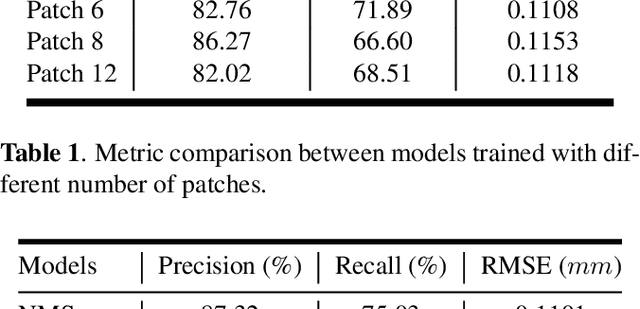
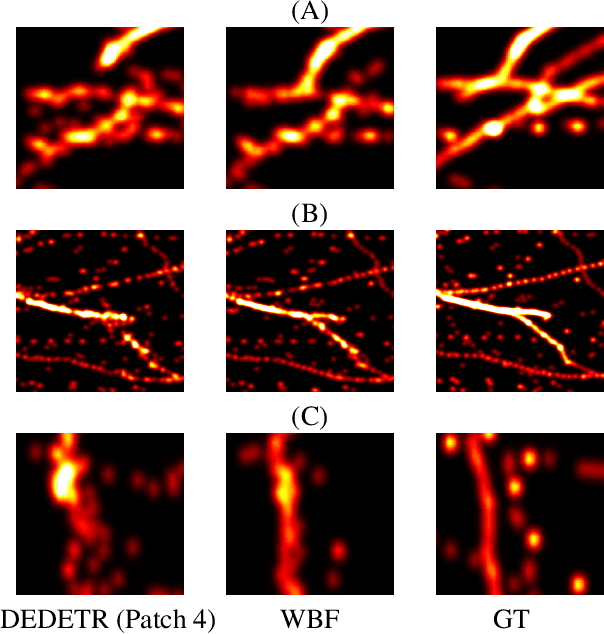

Abstract:Super-resolution ultrasound (SR-US) is a powerful imaging technique for capturing microvasculature and blood flow at high spatial resolution. However, accurate microbubble (MB) localization remains a key challenge, as errors in localization can propagate through subsequent stages of the super-resolution process, affecting overall performance. In this paper, we explore the potential of ensemble learning techniques to enhance MB localization by increasing detection sensitivity and reducing false positives. Our study evaluates the effectiveness of ensemble methods on both in vivo and simulated outputs of a Deformable DEtection TRansformer (Deformable DETR) network. As a result of our study, we are able to demonstrate the advantages of these ensemble approaches by showing improved precision and recall in MB detection and offering insights into their application in SR-US.
Deformable-Detection Transformer for Microbubble Localization in Ultrasound Localization Microscopy
Aug 18, 2023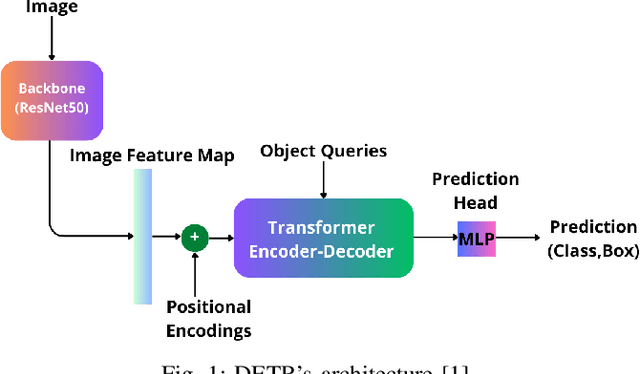


Abstract:To overcome the half a wavelength resolution limitations of ultrasound imaging, microbubbles (MBs) have been utilized widely in the field. Conventional MB localization methods are limited whether by exhaustive parameter tuning or considering a fixed Point Spread Function (PSF) for MBs. This questions their adaptability to different imaging settings or depths. As a result, development of methods that don't rely on manually adjusted parameters is crucial. Previously, we used a transformer-based approach i.e. DEtection TRansformer (DETR) (arXiv:2005.12872v3 and arXiv:2209.11859v1) to address the above mentioned issues. However, DETR suffers from long training times and lower precision for smaller objects. In this paper, we propose the application of DEformable DETR (DE-DETR) ( arXiv:2010.04159) for MB localization to mitigate DETR's above mentioned challenges. As opposed to DETR, where attention is casted upon all grid pixels, DE-DETR utilizes a multi-scale deformable attention to distribute attention within a limited budget. To evaluate the proposed strategy, pre-trained DE-DETR was fine-tuned on a subset of the dataset provided by the IEEE IUS Ultra-SR challenge organizers using transfer learning principles and subsequently we tested the network on the rest of the dataset, excluding the highly correlated frames. The results manifest an improvement both in precision and recall and the final super-resolution maps compared to DETR.
Transformer-Based Microbubble Localization
Sep 23, 2022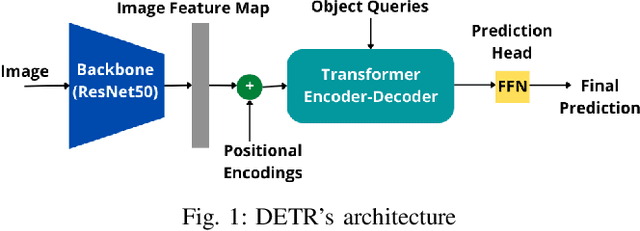
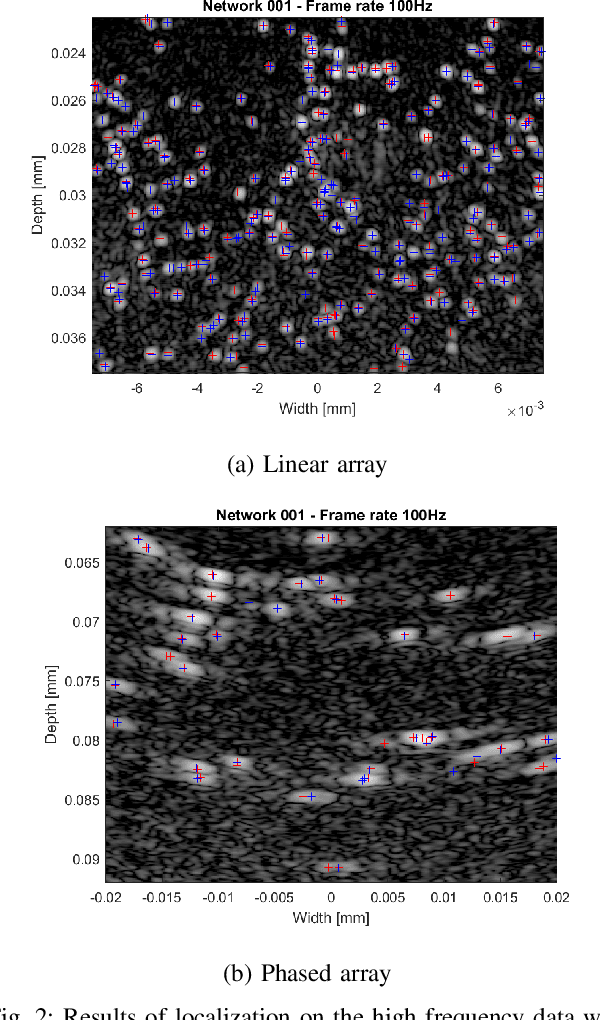
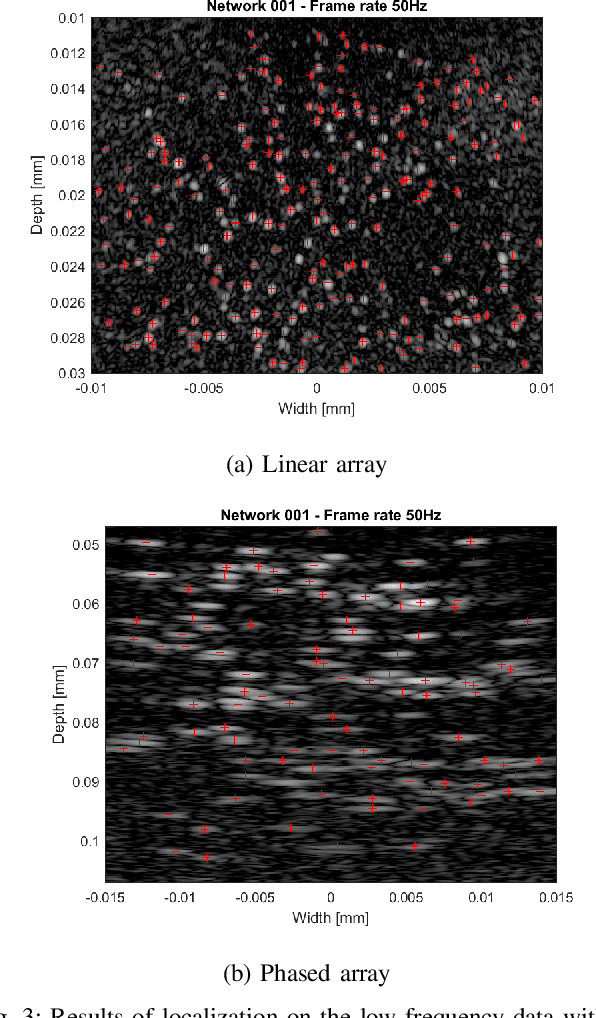
Abstract:Ultrasound Localization Microscopy (ULM) is an emerging technique that employs the localization of echogenic microbubbles (MBs) to finely sample and image the microcirculation beyond the diffraction limit of ultrasound imaging. Conventional MB localization methods are mainly based on considering a specific Point Spread Function (PSF) for MBs, which leads to loss of information caused by overlapping MBs, non-stationary PSFs, and harmonic MB echoes. Therefore, it is imperative to devise methods that can accurately localize MBs while being resilient to MB nonlinearities and variations of MB concentrations that distort MB PSFs. This paper proposes a transformer-based MB localization approach to address this issue. We adopted DEtection TRansformer (DETR) arXiv:2005.12872 , which is an end-to-end object recognition method that detects a unique bounding box for each of the detected objects using set-based Hungarian loss and bipartite matching. To the authors' knowledge, this is the first time transformers have been used for MB localization. To appraise the proposed strategy, the pre-trained DETR network's performance has been tested for detecting MBs using transfer learning principles. We have fine-tuned the network on a subset of randomly selected frames of the dataset provided by the IEEE IUS Ultra-SR challenge organizers and then tested on the rest using cross-validation. For the simulation dataset, the paper supports the deployment of transformer-based solutions for MB localization at high accuracy.
Analytic Optimization-Based Microbubble Tracking in Ultrasound Super-Resolution Microscopy
Sep 21, 2022
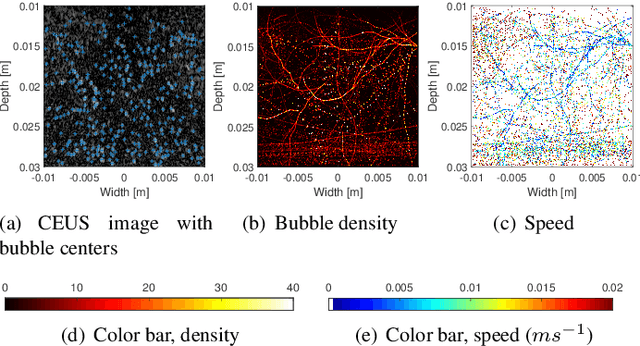
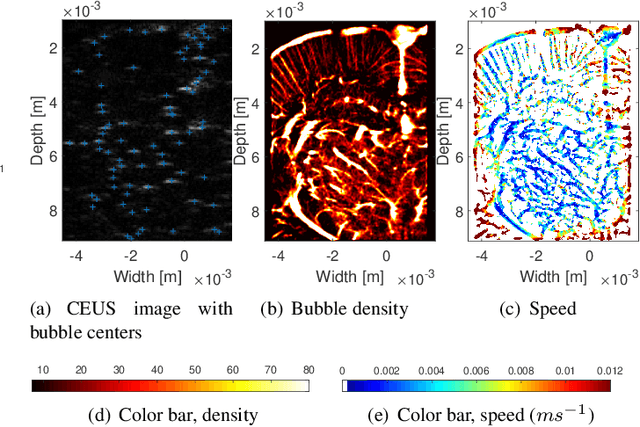

Abstract:Ultrasound localization microscopy (ULM) refers to a promising medical imaging modality that systematically leverages the advantages of contrast-enhanced ultrasound (CEUS) to surpass the diffraction barrier and delineate the microvascular map. Localization and tracking of microbubbles (MBs), two significant steps of ULM, facilitate generating the vascular map and the velocity distribution, respectively. Herein, we propose a novel MB tracking technique considering temporal pairing as a bubble-set registration problem. Iterative registration is performed between the bubble sets in two consecutive time instants by analytically optimizing a cost function that takes position and point-spread function (PSF) similarities as well as physically plausible levels of bubbles' movement into account. Furthermore, we infer MBs' parity in a fuzzy manner instead of binary. The proposed technique performs well in validation experiments with two synthetic and two in vivo datasets provided by the Ultrasound Localisation and TRacking Algorithms for Super Resolution (ULTRA-SR) Challenge.
 Add to Chrome
Add to Chrome Add to Firefox
Add to Firefox Add to Edge
Add to Edge